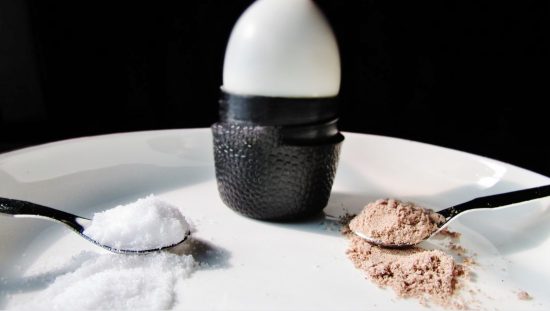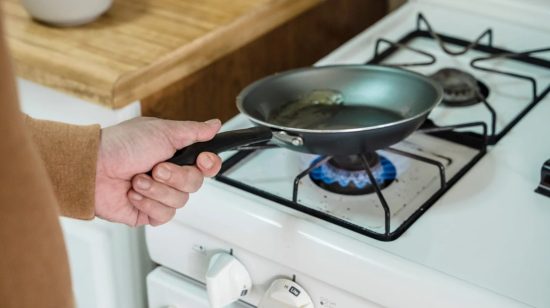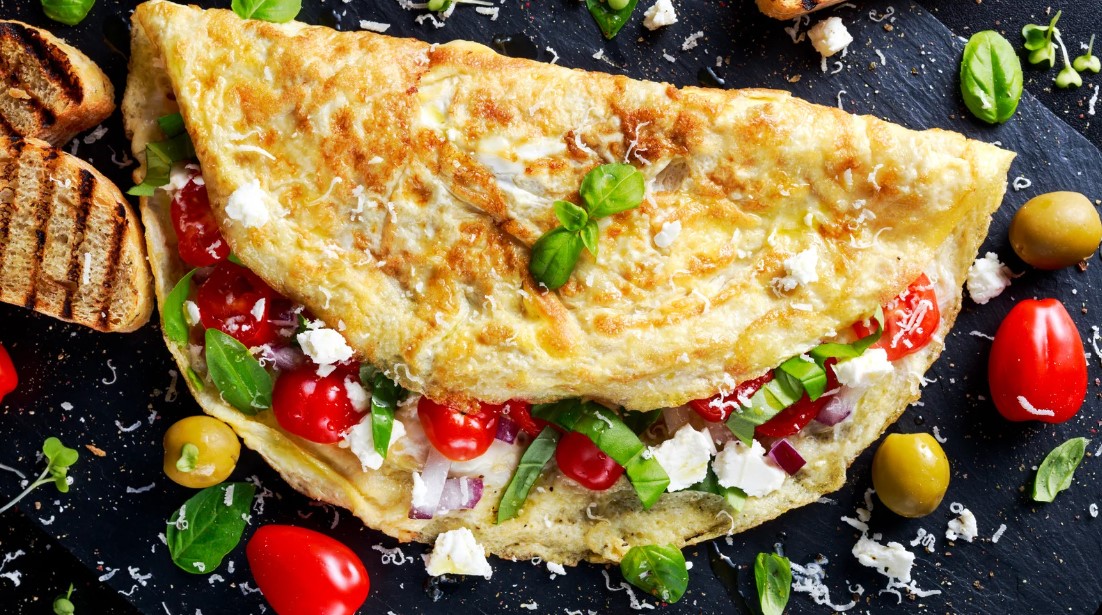Are you tired of the same old scrambled eggs for breakfast? Looking to take your egg game to a whole new level? Well, look no further because today we’re going to show you how to make an omelette that will have your taste buds doing a happy dance!
Whether it’s a quick and easy weekday meal or a leisurely weekend brunch, mastering the art of making an omelette is essential for any home cook. So put on your apron and get ready to whisk, flip, and fold your way to omelette perfection. Let’s dive in and discover the secrets behind creating this classic dish that never fails to impress!
The Basic Ingredients Needed for Omelette

When making an omelette, simplicity is key. Here are the essential ingredients that form the foundation of this classic dish:
- Eggs: The star of the show opts for fresh, high-quality eggs. Typically, 2-3 eggs per omelette is a good starting point.
- Salt and Pepper: Enhance the overall taste with a pinch of salt to bring out natural flavours and freshly ground black pepper for a subtle kick.
- Whisked Eggs: Achieve that desired fluffy texture by whisking the eggs in a bowl. Season with salt and pepper, ensuring everything is well combined.
- Butter or Oil: Prevent sticking and add richness to your omelette by heating around 1 tablespoon of butter or oil in a non-stick frying pan over medium heat.
With these basic ingredients, you’re set to embark on a journey to create a delicious omelette. Stay tuned for the step-by-step process to ensure consistently delightful results every time you prepare this beloved dish.
How to Make the Omelette?
Step 1: Whisk Eggs

Whisking eggs is a fundamental culinary technique that involves combining the yolk and whites until they are well blended. Whisking creates air pockets within the eggs, resulting in a light and fluffy texture when cooked.
The process of whisking also helps to break down the proteins in the eggs, creating a smoother consistency. Whether you’re preparing scrambled eggs, an omelette, or a batter for baking, whisking eggs thoroughly is key to achieving a uniform mixture.
It’s best to use a whisk or a fork for this task, vigorously beating the eggs until they become frothy and pale yellow in colour. So, grab your whisk and get ready to create delicious and airy dishes with perfectly whisked eggs.
Step 2: Heat Pan

Heating the pan is an essential step in cooking that sets the foundation for a successful dish. Whether you’re sautéing, searing, or frying, properly heating the pan is crucial for achieving optimal results.
When a pan is heated, it allows food to cook evenly and develop flavours, textures, and colours. Heating also creates a non-stick surface, preventing ingredients from sticking to the pan. The choice of heat intensity depends on the recipe and the type of pan being used.
It’s important to preheat the pan over medium to high heat for a few minutes before adding any oil or ingredients. A properly heated pan will sizzle when food is added, ensuring a quick sear and a delicious end result. So, take your time to heat the pan adequately and elevate your cooking experience to new levels of perfection.
Step 3: Pour and Cook Eggs

Pouring and cooking eggs is a versatile technique that opens up a world of possibilities for creating delicious meals. In this method, beaten eggs are poured into a heated pan and cooked until they reach the desired consistency.
Whether you’re making scrambled eggs, an omelette, or sunny-side-up eggs, pouring and cooking them is all about mastering the timing and heat control. The key is to pour the beaten eggs gently into the pan, allowing them to spread evenly. As the eggs cook, it’s important to adjust the heat to prevent burning and achieve the desired level of doneness.
This technique allows for endless customization by adding various fillings or seasonings to enhance flavour and create unique combinations. Pouring and cooking eggs is a quick and satisfying way to whip up a nutritious and delectable meal that can be enjoyed any time of the day.
Step 4: Add Fillings

Adding fillings to dishes like omelettes, frittatas, or scrambled eggs is a fantastic way to enhance both flavour and texture. The possibilities are endless when it comes to fillings, allowing you to get creative and tailor your dish to your preferences.
Some popular choices include cheese (such as cheddar, feta, or goat cheese), vegetables (like spinach, mushrooms, peppers, or onions), meats (such as ham, bacon, sausage, or smoked salmon), and herbs (such as basil, parsley, or dill). You can sauté the fillings beforehand to intensify their flavours or use leftovers from previous meals.
When adding fillings, distribute them evenly over the eggs in the pan, being mindful not to overstuff the dish. This will ensure that each bite has a balanced combination of ingredients. So, go ahead and experiment with different fillings to create personalized and mouthwatering egg dishes that cater to your taste buds.
Step 5: Fold Omelette

Folding an omelette is the final step that brings everything together into a neat and delicious package. Once the eggs have cooked and the fillings are added, it’s time to gently fold one half of the omelette over the other.
This folding technique helps seal in the fillings and creates a beautiful presentation. Using a spatula, carefully lift the empty half of the omelette and fold it over the side with the fillings. Take your time and be gentle to prevent any filling from spilling out.
The fold creates a pocket of flavours and textures within the omelette, ensuring each bite is a delightful combination of ingredients. By mastering the art of folding, you’ll not only elevate the visual appeal of your omelette but also enjoy a satisfying eating experience.
Step 6: Cook Through and Serve

Once your omelette is folded and ready, it’s important to ensure that it is fully cooked through before serving. This ensures that the eggs are properly set, resulting in a safe and delicious meal. Continue cooking the omelette for another minute or two over medium heat, allowing the residual heat to penetrate the filling and fully cook the eggs. Keep an eye on the omelette and adjust the heat if needed to prevent burning.
Once cooked through, carefully slide the omelette onto a plate using a spatula, making sure not to break the fold. You can garnish the omelette with additional toppings like fresh herbs, grated cheese, or a drizzle of sauce to add extra flavour and presentation. Serve the omelette hot and enjoy the delightful combination of fluffy eggs, savoury fillings, and a satisfying meal that you’ve prepared with care.
| Steps | Instructions |
| Whisk Eggs |
Use a whisk or fork to beat eggs until frothy and pale yellow for a light, fluffy texture.
|
| Heat Pan |
Preheat the pan over medium-high heat for even cooking and to create a non-stick surface.
|
| Pour and Cook Eggs |
Gently pour beaten eggs into the heated pan, adjust heat, and cook to desired consistency.
|
| Add Fillings |
Distribute fillings like cheese, vegetables, or meats evenly over eggs to enhance flavour and texture.
|
| Fold Omelette |
Carefully fold one half of the omelette over the other to create a neat package and seal in fillings.
|
| Cook Through and Serve |
Ensure the omelette is fully cooked through, garnish with toppings, slide onto a plate, and serve hot.
|
Omelette Nutrition Chart
Here is a general nutrition chart for a basic omelette (2 eggs) cooked with oil and no added ingredients:
- Calories: 186
- Total Fat: 14g
- Saturated Fat: 3.6g
- Cholesterol: 375mg
- Sodium: 124mg
- Total Carbohydrates: 1.5g
- Dietary Fiber: 0g
- Sugars: 1.5g
- Protein: 13g
Please note that the nutritional values may vary depending on the specific ingredients and cooking methods used to prepare the omelette.
Common Mistakes to Avoid When Making an Omelette
Using too much heat: Cooking over high heat can result in a burnt exterior and undercooked interior. Opt for medium heat to ensure even cooking throughout.
- Overfilling the omelette: Resist the urge to overload with fillings. Too many ingredients can lead to a messy and challenging-to-flip omelette. Stick to a moderate amount for better results.
- Not seasoning properly: Ensure you season your eggs adequately with salt and pepper. Add these directly to the whisked eggs before cooking for enhanced flavour.
- Flipping too early: Exercise patience and wait until the edges are set before attempting to flip. Premature flipping can result in a broken omelette instead of a neatly folded one.
- Not prepping ingredients beforehand: Have all your ingredients ready before starting the cooking process. Prepping while the eggs are in the pan can lead to overcooking or burning.
By steering clear of these common mistakes, you’ll elevate your omelette-making skills and consistently achieve a delightful, perfectly folded result.
Conclusion
In conclusion, making an omelette is a simple yet versatile culinary skill that allows you to create a delicious and customizable meal.
By following the step-by-step process of beating the eggs, heating the pan, adding fillings, and folding the omelette, you can achieve a dish that is both visually appealing and bursting with flavour. Remember to experiment with different fillings, spices, and cooking techniques to make each omelette unique.
With a little practice, you’ll be able to whip up perfect omelettes that will impress your family and friends. So, go ahead and embrace your inner chef and enjoy the pleasure of creating a fluffy and satisfying omelette right in your own kitchen.
FAQs – How to Make an Omelette?
Is omelette junk food?
No, an omelette is not considered junk food. It is a versatile and nutritious dish made from eggs, which are a good source of protein, vitamins, and minerals. The nutritional value can vary based on ingredients and cooking methods, but generally, omelettes can be part of a healthy diet.
Do you put milk in an omelette?
Yes, you can put milk in an omelette. Adding a small amount of milk to beaten eggs can contribute to a fluffier texture. However, it’s a matter of personal preference, and many people enjoy omelettes without milk as well.
Can we eat 2 omelettes daily?
Eating two omelettes daily can be part of a balanced diet, but it’s essential to consider overall dietary needs and variety. It’s advisable to include a diverse range of foods to ensure you get a spectrum of nutrients. Consult with a nutritionist or healthcare professional for personalized advice based on your health and dietary goals.
How do I prevent my omelette from sticking to the pan?
To prevent your omelette from sticking to the pan:
- Use a non-stick pan.
- Ensure the pan is well-heated before adding the eggs.
- Add a sufficient amount of butter or oil to coat the pan.
- Wait until the edges of the omelette are set before attempting to flip.
Can I use milk or cream in my omelette mixture?
Yes, you can use milk or cream in your omelette mixture. Adding a small amount can contribute to a creamier texture. However, it’s optional, and many people make delicious omelettes without using milk or cream. Adjust according to your taste preferences.

